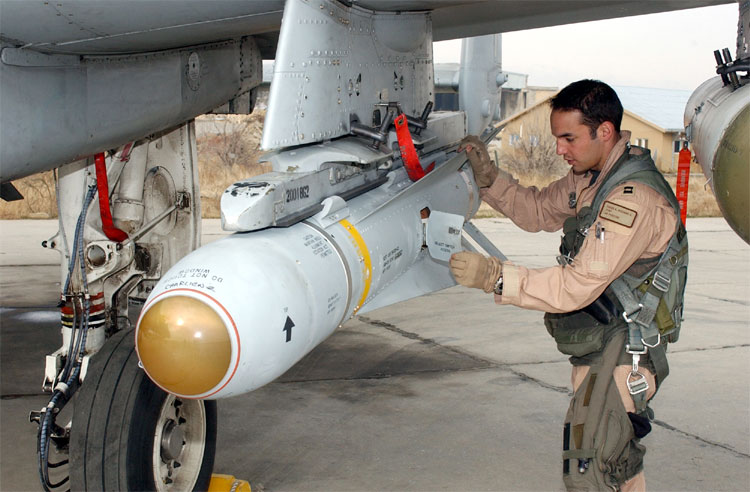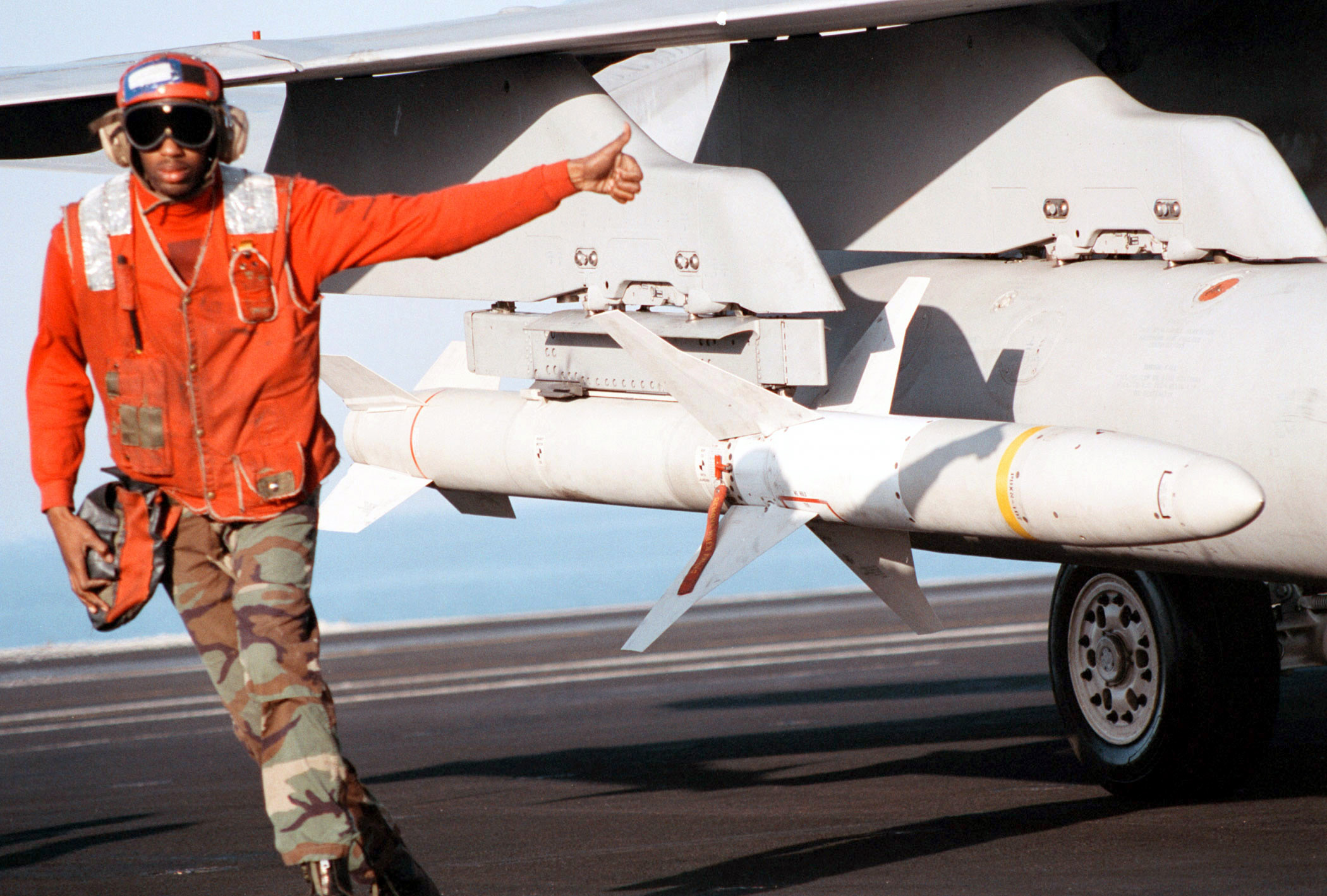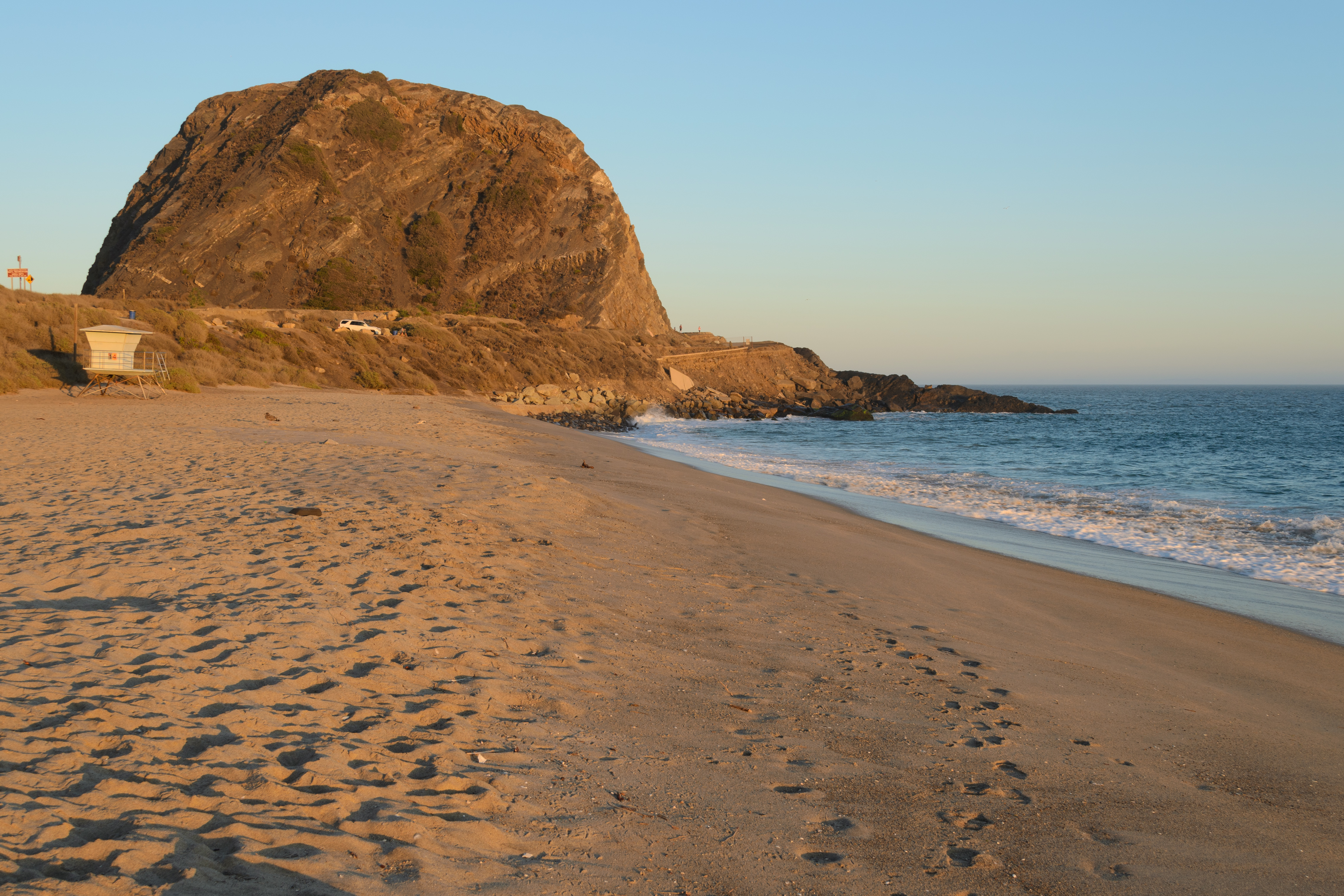|
ASM-N-8 Corvus
The ASM-N-8 Corvus was an anti-radiation missile developed by Temco Aircraft for the United States Navy. History In April 1955, the U.S. Navy planned the acquisition of a long-range air-to-surface missile armed with a nuclear warhead. This weapon should be carried by the carrier-based North American A3J Vigilante and Douglas A4D Skyhawk. This missile was named ASM-N-8 Raven. Later that year, the project was changed to a nuclear armed anti-radar missile, and renamed Corvus. Temco Aircraft was awarded a development contract in January 1957. The first flight of an XASM-N-8 missile occurred in July 1959. By March 1960, fully guided flights had been made at the Pacific Missile Test Center at Point Mugu, California. However, the program was cancelled in July 1960, when the overall responsibility for long-range nuclear air-to-surface missiles was transferred to the United States Air Force, which had no use for the ''Corvus'' missile. Specifications The XASM-N-8 had two delta wings and ... [...More Info...] [...Related Items...] OR: [Wikipedia] [Google] [Baidu] |
Air-to-surface Missile
An air-to-surface missile (ASM) or air-to-ground missile (AGM) is a missile designed to be launched from military aircraft at targets on land or sea. There are also unpowered guided glide bombs not considered missiles. The two most common propulsion systems for air-to-surface missiles are rocket motors, usually with shorter range, and slower, longer-range jet engines. Some Soviet-designed air-to-surface missiles are powered by ramjets, giving them both long range and high speed. Guidance for air-to-surface missiles is typically via laser guidance, infrared guidance, optical guidance or via satellite guidance A guided bomb (also known as a smart bomb, guided bomb unit, or GBU) is a precision-guided munition designed to achieve a smaller circular error probable (CEP). The creation of precision-guided munitions resulted in the retroactive renaming of ... signals. The type of guidance depends on the type of target. Ships, for example, may be detected via passive radar or ... [...More Info...] [...Related Items...] OR: [Wikipedia] [Google] [Baidu] |
Anti-radiation Missile
An anti-radiation missile (ARM) is a missile designed to detect and home in on an enemy radio emission source. Typically, these are designed for use against an enemy radar, although jammers and even radios used for communications can also be targeted in this manner. The earliest known anti-radiation weapon is a variant of the Blohm & Voss BV 246 radar guided bomb. Air-to-surface Most ARM designs to date have been intended for use against ground-based radars. Commonly carried by specialist aircraft in the Suppression of Enemy Air Defenses (SEAD) role (known to United States Air Force as "Wild Weasels"), the primary purpose of this type of missile is to degrade enemy air defenses in the first period of a conflict in order to increase the chance of survival for the following waves of strike aircraft. They can also be used to quickly shut down unexpected surface-to-air missile (SAM) sites during an air raid. Often, SEAD escort aircraft also carry cluster bombs, which can be u ... [...More Info...] [...Related Items...] OR: [Wikipedia] [Google] [Baidu] |
Douglas A-4 Skyhawk
The Douglas A-4 Skyhawk is a single-seat subsonic carrier-capable light attack aircraft developed for the United States Navy and United States Marine Corps in the early 1950s. The delta-winged, single turbojet engined Skyhawk was designed and produced by Douglas Aircraft Company, and later by McDonnell Douglas. It was originally designated A4D under the U.S. Navy's pre-1962 designation system. The Skyhawk is a relatively light aircraft, with a maximum takeoff weight of , and has a top speed of . The aircraft's five hardpoints support a variety of missiles, bombs, and other munitions. It is capable of carrying a bomb load equivalent to that of a World War II–era Boeing B-17 bomber, and can deliver nuclear weapons using a low-altitude bombing system and a "loft" delivery technique. The A-4 was originally powered by the Wright J65 turbojet engine; from the A-4E onwards, the Pratt & Whitney J52 engine was used. Skyhawks played key roles in the Vietnam War, the Yom Kippur ... [...More Info...] [...Related Items...] OR: [Wikipedia] [Google] [Baidu] |
Temco Aircraft
The Texas Engineering & Manufacturing Company (TEMCO), also known as Temco Aircraft Corporation, was a U.S.-based manufacturing company located in Dallas, Texas, USA. It is best known for eventually forming part of the conglomerate Ling-Temco-Vought. Company formation Temco was the brainchild of Robert McCulloch, who began his career in aircraft with the Aircraft Division of William Beardmore and Company in Scotland. McCulloch emigrated to the US in 1927 and worked for a small machining company before joining the Atlantic Aircraft Corporation. The company was "flipped" a number of times during the Great Depression, first becoming Fokker Aircraft of America, then General Aviation, and finally North American Aviation (NAA), where McCulloch rose to become Factory Manager in 1941. That year he took a position at Convair as the General Manager of their factory in Nashville, Tennessee, but he returned to NAA in 1943 and by the end of World War II was the manager of their new plant in t ... [...More Info...] [...Related Items...] OR: [Wikipedia] [Google] [Baidu] |
United States Navy
The United States Navy (USN) is the maritime service branch of the United States Armed Forces and one of the eight uniformed services of the United States. It is the largest and most powerful navy in the world, with the estimated tonnage of its active battle fleet alone exceeding the next 13 navies combined, including 11 allies or partner nations of the United States as of 2015. It has the highest combined battle fleet tonnage (4,635,628 tonnes as of 2019) and the world's largest aircraft carrier fleet, with eleven in service, two new carriers under construction, and five other carriers planned. With 336,978 personnel on active duty and 101,583 in the Ready Reserve, the United States Navy is the third largest of the United States military service branches in terms of personnel. It has 290 deployable combat vessels and more than 2,623 operational aircraft . The United States Navy traces its origins to the Continental Navy, which was established during the American Revo ... [...More Info...] [...Related Items...] OR: [Wikipedia] [Google] [Baidu] |
North American A-5 Vigilante
The North American A-5 Vigilante was an American carrier-based supersonic bomber designed and built by North American Aviation (NAA) for the United States Navy. Prior to 1962 unification of Navy and Air Force designations, it was designated the A3J Vigilante.Wagner 1982, p. 361. Development of the A-5 had started in 1954 as a private venture by NAA, who sought to produce a capable supersonic long distance bomber as a successor to the abortive North American XA2J Super Savage. It was a large and complex aircraft that incorporated several innovative features, such as being the first bomber to feature a digital computer, while its ability to attain speeds of up to Mach 2 while carrying a nuclear strike payload was also relatively ambitious for the era. The US Navy saw the value of such a bomber, leading to a contract for its full development and production being issued to the firm on 29 August 1956. The type performed its first flight just over two years later, on 31 August 1958. ... [...More Info...] [...Related Items...] OR: [Wikipedia] [Google] [Baidu] |
Pacific Missile Test Center
Pacific Missile Test Center (PMTC) is the former name of the current Naval Air Warfare Center, Weapons Division. The name of the center was the Naval Air Missile Test Center prior to PMTC. It is located at Naval Base Ventura County/Naval Air Station Point Mugu in Ventura County, California. The nearest city to the installation is Oxnard. The Naval Air Warfare Center consists of both the NAS Point Mugu airfield and a rocket launching site for the U.S. Navy. The center has been an active development and test facility for the Navy since the late 1940s. Among the missiles developed and tested there include the Sparrow family and the Phoenix, and AMRAAM air-to-air missiles and the Regulus surface-to-surface missile in addition to numerous prototypes of military rockets and sounding rockets. History It was originally built for anti-aircraft training during World War II. The base later shifted from traditional anti-aircraft munitions training to become a test center for anti-aircra ... [...More Info...] [...Related Items...] OR: [Wikipedia] [Google] [Baidu] |
Point Mugu, California
Point Mugu (, Chumash: ''Muwu'') is a cape or promontory within Point Mugu State Park on the Pacific Coast in Ventura County, near the city of Port Hueneme and the city of Oxnard. The name is believed to be derived from the Chumash Indian term "Muwu", meaning "beach", which was first mentioned by Cabrillo in his journals in 1542. Mugu Lagoon is a salt marsh just upcoast from the promontory within the Naval Base Ventura County formerly called the Naval Air Station Point Mugu. History The name derives from Muwu ( Ventureño: "Beach"), which was the name of a Chumash village at Point Mugu during pre-colonial times. The village of Muwu (CA-VEN-11) had the highest population of any coastal Chumash settlements along the Santa Monica Mountains. Muwu was a ceremonial center and the ancient capital of Lulapin, a major political unit of Chumash territory which stretched from modern day Los Angeles County to Santa Barbara in the north. The territory stretched for along the coast, and at ... [...More Info...] [...Related Items...] OR: [Wikipedia] [Google] [Baidu] |
United States Air Force
The United States Air Force (USAF) is the air service branch of the United States Armed Forces, and is one of the eight uniformed services of the United States. Originally created on 1 August 1907, as a part of the United States Army Signal Corps, the USAF was established as a separate branch of the United States Armed Forces in 1947 with the enactment of the National Security Act of 1947. It is the second youngest branch of the United States Armed Forces and the fourth in order of precedence. The United States Air Force articulates its core missions as air supremacy, global integrated intelligence, surveillance and reconnaissance, rapid global mobility, global strike, and command and control. The United States Air Force is a military service branch organized within the Department of the Air Force, one of the three military departments of the Department of Defense. The Air Force through the Department of the Air Force is headed by the civilian Secretary of the Air Force ... [...More Info...] [...Related Items...] OR: [Wikipedia] [Google] [Baidu] |
Thiokol
Thiokol (variously Thiokol Chemical Corporation(/Company), Morton Thiokol Inc., Cordant Technologies Inc., Thiokol Propulsion, AIC Group, ATK Thiokol, ATK Launch Systems Group; finally Orbital ATK before becoming part of Northrop Grumman) was an American corporation concerned initially with rubber and related chemicals, and later with rocket and missile propulsion systems. Its name is a portmanteau of the Greek words for sulfur (θεῖον ''"theion"'') and glue (κόλλα ''"kolla"''), an allusion to the company's initial product, Thiokol polymer. The Thiokol Chemical Company was founded in 1929. Its initial business was a range of synthetic rubber and polymer sealants. Thiokol was a major supplier of liquid polymer sealants during World War II. When scientists at the Jet Propulsion Laboratory discovered that Thiokol's polymers made ideal binders for solid rocket fuels, Thiokol moved into the new field, opening laboratories at Elkton, Maryland, and later production facilitie ... [...More Info...] [...Related Items...] OR: [Wikipedia] [Google] [Baidu] |
Douglas A-3 Skywarrior
The Douglas A-3 Skywarrior is a jet-powered strategic bomber that was developed and produced by the Douglas Aircraft Company. It was designed by Douglas on behalf of the United States Navy, which sought a carrier-capable strategic bomber. During July 1949, Douglas was awarded the contract to produce its design, having bested eight other aircraft companies' submissions. Unlike rival designs, which had aimed for a maximum take-off weight, the Skywarrior was developed for a take-off weight, facilitating its use from the navy's existing s. Large portions of the aircraft were produced by the Westinghouse Electric Corporation, including its early Westinghouse J40 turbojet engines, which failed to meet promises and were replaced by the rival Pratt & Whitney J57 engine by mid-1953. On 28 October 1952, the prototype ''XA3D-1'' performed the type's maiden flight. On 31 March 1956, the Skywarrior entered squadron service with the Navy. Initially used in the nuclear-armed strategic bomb ... [...More Info...] [...Related Items...] OR: [Wikipedia] [Google] [Baidu] |




%2C_in_July_1960.jpg)



